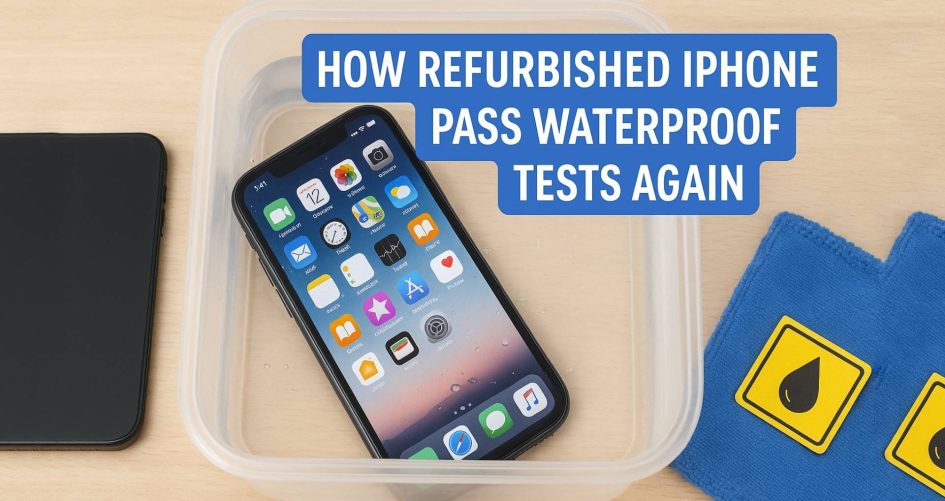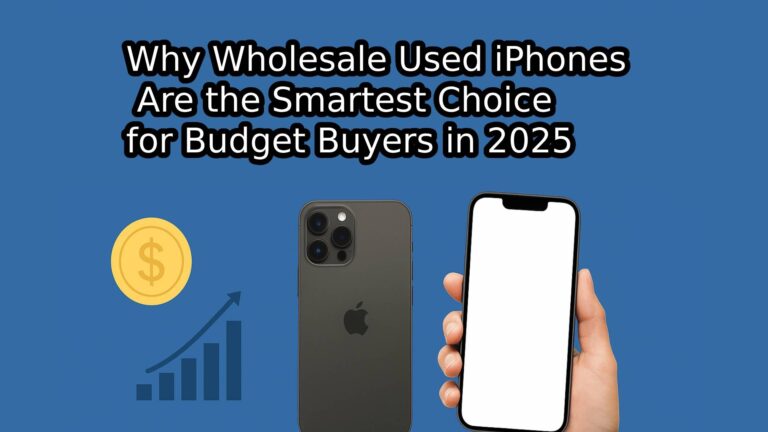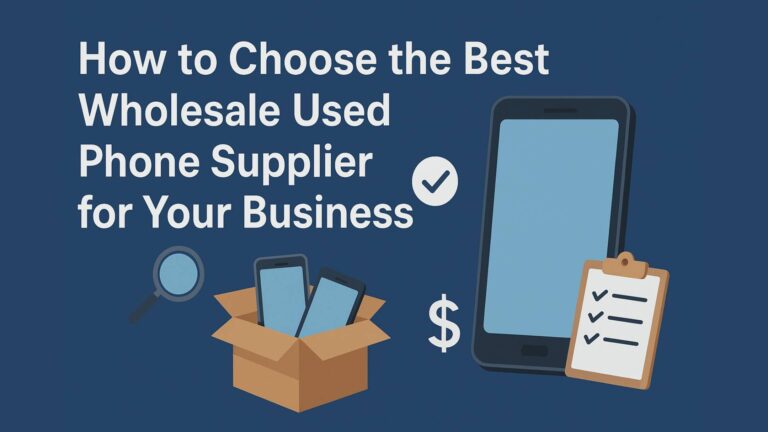In the refurbished tech world, delivering premium quality means more than just clean screens and working buttons—it means bringing back original durability. For Apple devices, that includes waterproof integrity. In this article, we explain how professional technicians achieve a full iPhone waterproof restore, why maintaining a high IP rating refurbished iphones standard matters, and the role of a perfectly executed sealed housing process in returning iPhones to their original splash-proof glory. Know more.
Why Waterproof Restoration Matters
Water resistance is a huge selling point in new phones, and customers buying refurbished devices expect the same reliability. A successful iPhone waterproof restore assures buyers that the phone has passed stringent internal and external reassembly tests. Without a full sealed housing, even minor liquid exposure could result in short circuits or corrosion.
As refurbished sellers, restoring an IP rating refurbished standard boosts trust, reduces returns, and differentiates your products in a crowded marketplace.
Understanding Apple’s IP Ratings
Apple iPhones from the iPhone 7 onwards carry official IP67 or IP68 ratings, meaning:
- IP67: Immersion up to 1 meter for 30 minutes
- IP68: Immersion up to 2 meters or more depending on the model
To meet these standards during a full iPhone waterproof restore, refurbishers must replicate factory-grade sealed housing and test against leaks. That’s why IP rating refurbished iPhones go through multiple sealing, pressure, and inspection stages.
What Breaks the Seal in Refurb Devices?
The sealed housing is often compromised during common repairs:
- Screen replacements
- Battery swaps
- Camera module changes
- Charging port repairs
Even minimal opening of the housing breaks the original adhesive barrier, meaning a new seal is required to achieve a true iPhone waterproof restore. Without reapplying adhesive and testing, the phone no longer meets IP rating refurbished expectations.
Step-by-Step: How We Restore Waterproofing in Refurbished iPhones
Let’s walk through the process of achieving a proper iPhone waterproof restore that meets high IP rating refurbished standards:
1. Clean Room Preparation
All sealed housing work is performed in a dust-free environment. Dust, oils, or debris trapped under seals can prevent waterproofing from working—even if adhesives are used correctly.
Technicians clean all parts thoroughly using isopropyl alcohol and lint-free cloths before any assembly begins.
2. Use of Factory-Grade Waterproof Adhesives
Apple uses custom-cut waterproof adhesive strips in the sealed housing of every new iPhone. To match this during an iPhone waterproof restore:
- Genuine or OEM-matching adhesive gaskets are applied.
- Adhesive is cut to exact model specs (e.g., iPhone 12 vs iPhone 14).
- Adhesive strips are heat-activated to ensure bonding.
Without these factory-grade adhesives, achieving a proper IP rating refurbished status isn’t possible.
3. Precision Screen Placement and Pressure Sealing
After applying the adhesive:
- Screens are lowered into place using mechanical alignment jigs.
- Controlled pressure is applied to activate adhesive bonding evenly around the perimeter.
- Heat guns or presses may be used briefly to mimic factory curing conditions.
This results in a clean, air-tight sealed housing ready for water ingress testing.
4. Waterproof Testing Procedures
Once the iPhone has been reassembled:
- A vacuum chamber or pressure testing device simulates submersion.
- The phone is monitored for air leaks or internal pressure drops.
- Some refurbishers use water immersion tests with indicators (liquid contact strips or dye).
Only devices that pass these tests are labeled with IP rating refurbished status and marked as complete iPhone waterproof restore units.
5. Internal Water Resistance Checks
Beyond external seals, technicians inspect internal components for:
- Proper placement of rubber O-rings on the SIM tray, camera lenses, and microphones.
- Connector gaskets on charging ports, speakers, and buttons.
- Clean and undamaged waterproof membranes over mics and speaker grilles.
Neglecting any internal point of failure can compromise the sealed housing, voiding the IP rating refurbished quality.
Tools and Equipment Used
To ensure accurate iPhone waterproof restore, professional refurbishers use:
- OEM-grade gasket adhesive rolls
- Heat-controlled screen press tools
- Vacuum or positive-pressure leak testers
- Dust-controlled clean room setup
- Liquid Contact Indicator (LCI) testers
- Precision alignment jigs
All these ensure that the final sealed housing performs like new.
Why Sealed Housing Rework is Tricky
Achieving a perfect sealed housing is not as easy as re-gluing a screen. Several challenges include:
- Incomplete adhesive bond due to misalignment
- Dust contamination in seals
- Using poor-quality aftermarket parts
- Over-tightening or under-tightening screws, causing flex gaps
This is why experienced technicians and quality assurance are crucial for consistent IP rating refurbished phones and reliable iPhone waterproof restore procedures.
What Happens if Waterproofing Isn’t Restored?
If the sealed housing isn’t properly restored:
- The iPhone may fail under minor splash or rain exposure.
- Water damage to logic boards or cameras could void warranty coverage.
- Customers lose confidence in buying refurbished products.
That’s why iPhone waterproof restore practices directly impact brand trust, returns, and long-term device performance in wholesale resale.
IP Rating Refurbished: A New Standard in Refurbishment
In today’s competitive mobile refurb market, simply powering on isn’t enough. Customers want full functionality—including waterproofing. Marketing devices as IP rating refurbished means:
- Devices passed waterproof restoration and leak testing
- Seals match factory specs
- Buyers can use phones confidently in real-world conditions
Offering IP rating refurbished products boosts wholesale credibility and sales value.
Tips for Wholesale Distributors
If you’re selling refurbished iPhones in bulk:
- Work only with suppliers who provide iPhone waterproof restore certification
- Ask for pressure test results or seal pass reports
- Include “IP rating refurbished” in product descriptions to increase perceived value
- Train your team on checking sealed housing quality during intake
By doing so, you ensure consistency and reduce returns due to moisture damage.
Final Thoughts
A properly executed iPhone waterproof restore protects devices, enhances resale value, and builds brand trust. With modern tools and strict quality standards, sealed housing integrity can be restored to factory levels—even after screen, battery, or port repairs. Offering IP rating refurbished iPhones helps customers make confident, informed choices—and ensures your wholesale stock stands out in a growing, quality-conscious market.





